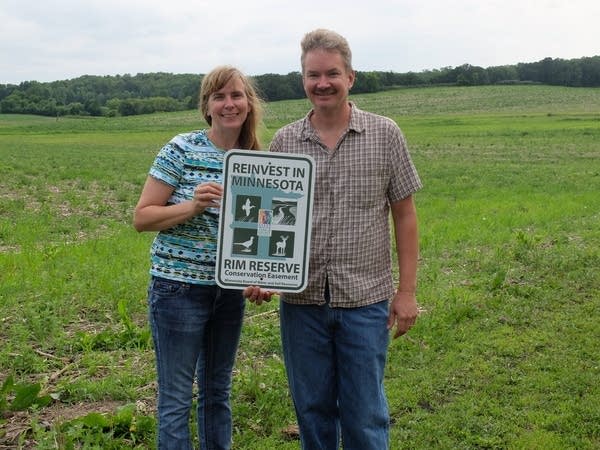Minnesota sweetens the pot to shift cropland into conservation

On Tuesday, July 3, 2018, Rob and Loreli Westby stand with a sign that will soon mark the land they are enrolling in the Conservation Reserve Enhancement Program near Dalton, Minn.
Dan Gunderson | MPR News
Go Deeper.
Create an account or log in to save stories.
Like this?
Thanks for liking this story! We have added it to a list of your favorite stories.


